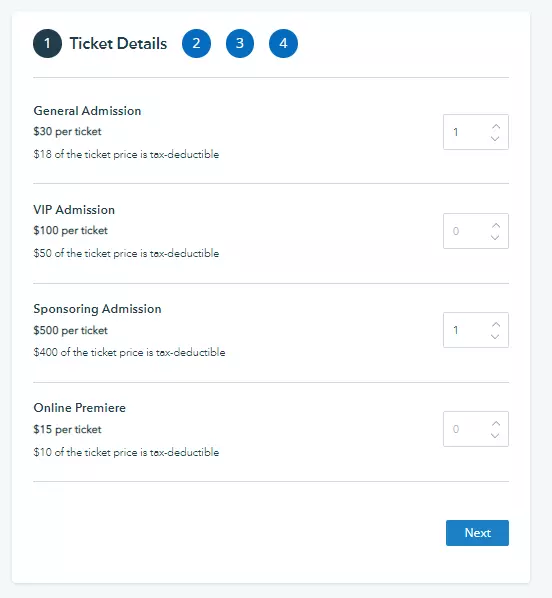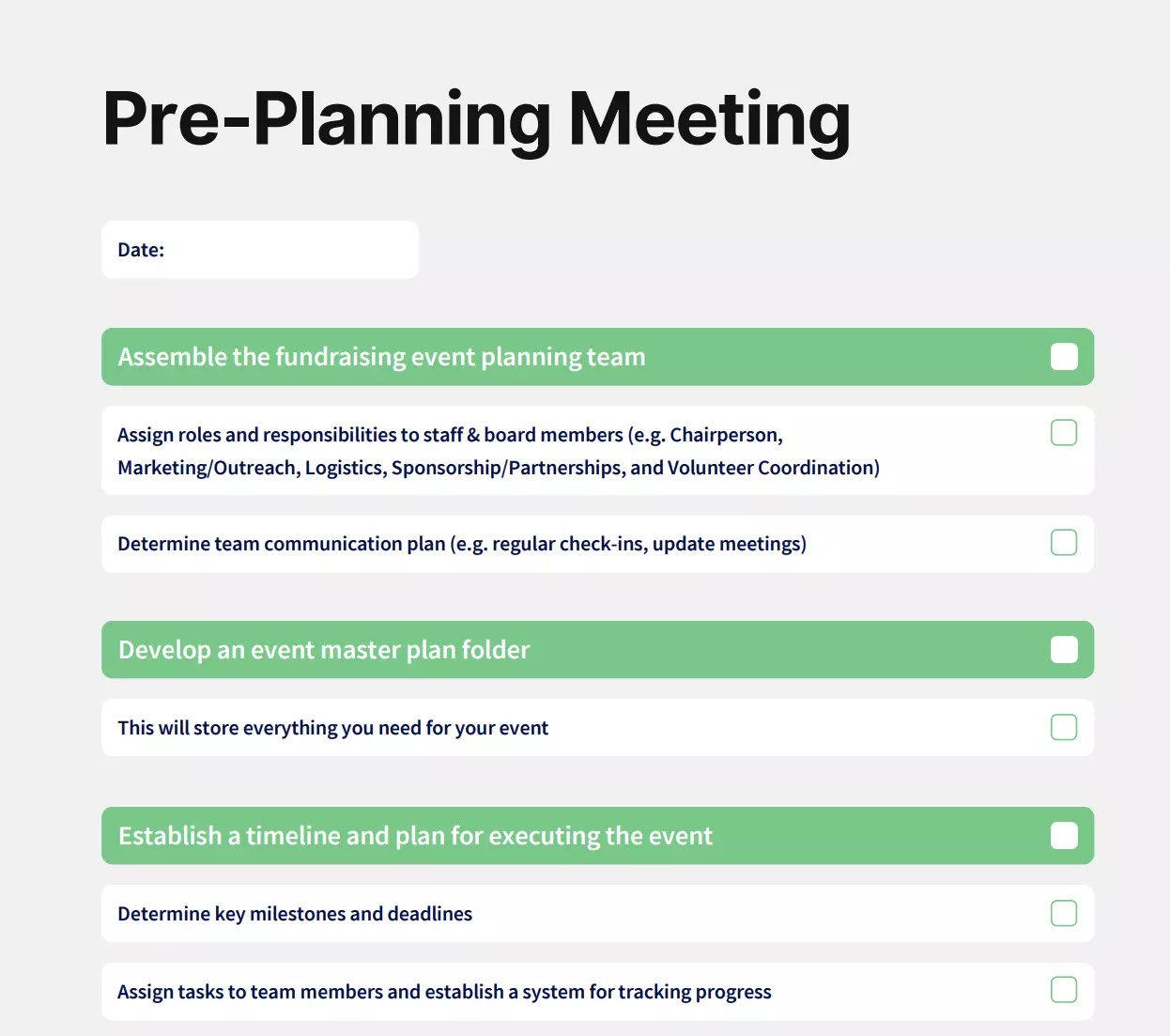Fundraising events play a vital role in the success of many nonprofits. While planning an event may seem daunting, the potential benefits make it worth the effort. Well-executed events, whether virtual or in-person, can raise funds, create awareness, and showcase the impact of your organization to a captive audience. It's an opportunity to tell your story, engage potential donors, and publicly thank your supporters.
To ensure a successful nonprofit event that generates critical funds, it's important to follow a strategic approach. Here are nine simple steps to guide you:
1. Form an Event Team
Assemble a dedicated event team comprising staff members, board members, and volunteers. Assign roles and tasks based on each person's expertise and experience. A well-coordinated team is crucial to the success of your event.
2. Identify Clear Goals and Targets
Define your event's goals and objectives with precision. Set measurable targets, such as overall donations, ticket revenue, audience numbers, and new/recurring donors. Identify your target audience based on demographics and tailor your marketing strategy accordingly.
3. Select a Concept and Theme
Choose a suitable event concept that aligns with your goals and target audience. Whether it's a black-tie gala, trivia night, fun run, or picnic, ensure that your theme is reflected in all aspects of the event, from decor to promotional materials.
 (Image source: starevent.vn)
(Image source: starevent.vn)
4. Construct an Event Budget
Determine your event budget by considering costs such as entertainment, venue, printing, design, marketing, food, drinks, and decorations. Get the budget approved by your executive director or board. If it's your first time planning such an event, research and gather quotes from various vendors.
5. Pick a Date
Choose a date that aligns with your target audience's availability and avoids clashes with major holidays or breaks. Consider any significant anniversaries or relevant national days. Consult other nonprofits with similar missions to avoid overlapping events. Ideally, select a date at least 12 months in advance to allow ample planning and promotion time.
6. Start Booking Vendors, Entertainment, and More
As soon as the event date is secured, book essential vendors, including the venue, caterer, rental company, photographers, and entertainment. Also, secure any event hosts or speakers early to ensure their availability and leverage their reputation in your advertising.
7. Plan Out Ticketing Details
Decide on the cost structure for your event, whether fixed or variable pricing. Utilize online event ticketing platforms like Donorbox Events to create a user-friendly event page, manage ticket types, fair market values, tax-deductibility, and purchaser details conveniently.
 (Image source: starevent.vn)
(Image source: starevent.vn)
8. Recruit Sponsorships and In-Kind Donations
Establish a sponsorship program, approaching businesses that have partnered with your organization before. Offer attractive sponsorship packages, including tickets, logo placement, and ads in return for funding. Additionally, seek in-kind donations from local businesses for auction items, AV equipment, or event venues.
9. Promote, Promote, Promote!
Start promoting your event early and consistently. Send "save the date" messages to your target audience at least six months in advance and follow up with formal invitations closer to the event. Utilize all available marketing channels, including digital and print ads, email campaigns, press releases, and social media updates, to maximize event visibility.
 (Image source: starevent.vn)
(Image source: starevent.vn)
For a detailed step-by-step guide on nonprofit event planning, download our free event planning checklist. It breaks down each task into manageable timeframes and simplifies the planning process.
Additional Tips for Prosperous Nonprofit Event Planning
To elevate your event planning efforts, consider the following tips:
1. Keep Your Team Informed
Regularly communicate with your event team through meetings and provide them with a comprehensive event manual. This manual should contain essential information such as venue maps, vendor contacts, VIP guest details, and any special instructions shared by ticket purchasers.
2. Use Text-to-Give
Incorporate text-to-give as a convenient and secure way to collect donations during the event. Donorbox's Text-to-Give add-on enables supporters to make donations quickly by simply texting a campaign ID or custom keyword. This ensures that you capture donations regardless of attendees' cash availability.
3. Say Thank You
Express your gratitude to volunteers, vendors, entertainers, donors, and attendees after the event. Showing appreciation helps cultivate strong relationships and encourages continued support for your organization's mission.
Planning successful nonprofit events requires time and effort, but the rewards are well worth it. Follow these steps, download our checklist, and explore Donorbox Events for seamless event management and online ticketing. Remember to leverage the power of gratitude and text-to-give to enhance the overall experience for your attendees, volunteers, and supporters.
(Bottom banner image source: starevent.vn)

















